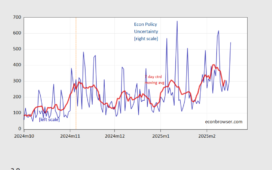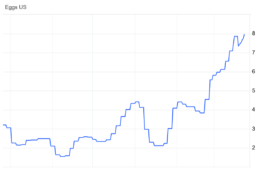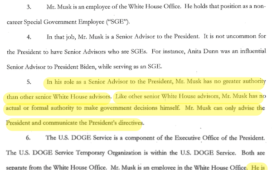There’s been an odd failure to question the claims about the dollar being past its sell-by date date even as it trades at lofty levels, including relative to the Euro, renminbi, and rouble. For instance, the dollar is at .93 Euro, well above its 5 five-year low of .82 in January 2020, as in well before the US shock-and-awe sanctions against Russia and ring-leading an asset freeze (EU banks actually hold way more than US banks). As we will discuss below, a new column in the Financial Times describing how other data shows that the dollar’s position is still solid.
We have repeatedly said that even though the dollar is destined to become less important over time by virtue of the US economy becoming a smaller percentage of global GDP. However, it took two world wars for the US to replace pound sterling as the dominant international currency, and that was with the US actively weakening the UK in how America went about assisting Britain’s military.
In addition, many of the anti-globalists (and this includes some officials in BRICS states) are not helping themselves by wanting to create a new currency out of thin air, much like Athena emerging from Zeus’ forehead. But since World War II, only two currencies of any significance have been created, the euro and the SDR. The SDR is not a freely tradeable currency, is not used for trade transactions, and is not something private parties can invest in. The euro took three years of planning and eight years of execution to get off without a hitch. And this was far simpler than launching a de novo currency, since existing national currencies were being converted into the euro, and all the participants were subject to the same legal system. As one of a myriad of issues, it’s hard to see a new currency being implemented without the participants consenting to which legal system would apply. Agreeing to the jurisdiction of a non-home court system for transaction disputes would amount to ceding of sovereignity, when one of the points of the emerging multipolar system is to support more national autonomy.
However, those seeking to escape the punitive use of the dollar do not need to create a new currency system to escape most US abuses of sanctions. Trade transactions represent only 1% to 3% of total dollar trades outside the US; the rest are for investments.
These dollar refusniks need to be able to conduct trade transactions outside the dollar system. It has long been possible to do so, as witness that China was buying Russian oil using renminbi in 2015. It is particularly cumbersome, which means now it’s been occurring mainly for very large trade transactions.
Notice that what Sergey Lavrov said on June 10 to a meeting of BRICS finance ministers is entirely consistent with having an aim of facilitating bi-lateral trade outside the dollar system, as opposed to creating a new currency. From RT:
Lavrov said BRICS was “actively working to implement the decisions of the Johannesburg summit last year, particularly when it comes to improving the international monetary and financial system, developing a platform for settlements in national currencies in mutual trade.”
He added that the bloc, which recently underwent a process of unprecedented expansion, is also looking to harmonize the framework of interaction between BRICS partners.
“Harmonize the framework” is clearly not the establishment of a new legal system, but to get legal terms and procedures with in the BRICS states more in synch.
To put it more bluntly, “new BRICS currency” crypto touts promoting their own schemes and their journalistic enablers are out over their skis.
What about the investment side? The US has considerable advantages via incumbency and is thus set to remain the least dirty shirt in the laundry for some time:
1. Liquidity. This is a scale advantage that is hard to reverse. That includes for professional traders significant depth in hedging instruments and strategies. The SEC regime for public securities, with its extensive disclosure requirements and regulations to curb insider trading and front running, is still best in class despite considerable creaks with age (such as not cracking down on HFT, which is basically predatory by adding liquidity when not needed and draining it when it is).
2. Established and reliable institutional procedures for clearing and settlement, including (critically) dispute resolution. Part of this is having well-settled legal precedents
3. Large range of investable assets. The US has an advantage here via having moved a lot of our lending out of banks and into capital markets (or more accurately, banks may still originate transactions and then securitize them). By contrast, most other major economies have much larger banks relative to GDP and smaller bond markets.
I could make many additions to this list, but this suffices to make the point.
Hence the conditions described in the Financial Times article, Dollar Doomsters Have Got It All Wrong, should not come as a complete surprise:
The share of global central bank reserves held in dollars has declined in recent decades. Back in 2016, the currency made up more than 65 per cent of official reserves, according to data from the IMF. By the end of 2023, that had shrunk to 58.4 per cent. The amount held in Chinese renminbi at the start of 2016 was zero. Between the end of that year and 2023 it jumped 188 per cent. But while that sounds huge, it is still just a 2.3 per cent slice of the total.
However, a recent blog from the New York Fed argues that the apparent pullback away from the dollar is not down to a global cooling on the buck. Instead, the shift is attributable to a small number of countries, including Switzerland, where a long-running effort to hold down the franc just over a decade ago led to a huge accumulation of euros. “Indeed, increasing US dollar shares from 2015 to 2021 were a feature of 31 of the 55 countries for which there are estimates,” economists at the New York Fed wrote in late May. “The decline in the dollar preferences of a small group of countries — notably China, India, Russia, and Turkey — and the large increase in the quantity of reserves held by Switzerland explain most of the decline in the aggregate dollar share of reserves.”
Meanwhile, central banks globally have ramped up purchases of gold, in an apparent effort to avoid the risk of sanctions, since gold is not controlled by any national authority. Yet, as the New York Fed stresses, even after a rapid accumulation of gold in 2022 and 2023, the precious metal still accounts for a relatively modest 10 per cent of the global reserve total. Narratives about declining dollar shares and increasing roles for gold “inappropriately generalise the actions of a small group of countries”, it says.
In fairness…gold holdings do appear poised to rise further. A survey of reserve managers by the Official Monetary and Financial Institutions Forum think-tank said despite record high gold prices and a taming in global inflation, for which gold is often seen as a hedge, reserve managers are keen to build up holdings of the metal.
However, demand for the dollar remains extremely robust. This survey does not capture every country, but it does cover 73 central banks, with a combined stash of $5.4tn. Of them, OMFIF said a net 18 per cent expect to increase not decrease their allocation to the dollar, lured in by higher interest rates and a robust US economy. The euro is the next most popular currency on the wish list, suggesting reserve managers are keen to stick to the bigger, more liquid currencies.
Now with the US determined to continue to behave badly, there is every reason for dollar worries, particularly among countries that are geopolitically significant and not solidly on Team Global Hegemon, to continue. However, a brake of sorts is the efforts of the financiers to stop the monumentally stoopid plan of seizing Russian assets. This might be an EU sacrifice too far, since as we mentioned above, far more of the frozen Russian assets are in Euros rather than dollar, exposing Eurozone institutions even more to blowback. Euroclear in particular is concerned it could be sued in jurisdictions where it operates, like Hong Kong, where courts would be more receptive to Russian arguments about the lack of a legal foundation for expropriation than in the Collective West.
Mind you, the US is still arm-twisting at the current G-7, but protracted talks are generally signs of serious differences. From Al-Jazeera:
US officials are trying to get European allies on board for a deal to present at the G7 leaders summit later this week on how to use the interest from Russian frozen assets to support war-torn Ukraine. But with the meeting in southern Italy starting on Thursday, discussions are still ongoing.
Some European countries are not yet fully convinced over the United States-led proposal, diplomatic sources told Al Jazeera.
Rome was not built in a day, and the same applies to a new currency regime. But the normal succession path, of the renminbi over time replacing the dollar due to China’s economic heft, is unlikely to happen even as soon as in a decade, with obstacles including China’s economic model of running persistent, large trade surpluses (which prevents meaningful accumulations of renminbi outside China) and China’s use of currency controls. So at this point, the most likely next regime is of fragmentation, of multiple major currencies used for trade and investment rather than a dominant currency. At the margin, it discourages trade since it forces importers and exporters to deal with more currencies, increasing their risks and forcing them to operate in a more financialized manner (witness the rise of Treasury as a profit center at pretty much all major multinationals).
So this remains an unsettled area. Stay tuned.
Update 5:45 AM EDT: As this post went live, the pink paper announced a deal of sorts about the Russian frozen assets. It is still awfully sketchy. The key bit is that it exploits only the income, and not the principal, of the frozen assets. Because reasons, Euroclear believes it has much stronger rights to that than the corpus. Recall again that even though this update describes the deal in dollar terms, it is the Europeans that are eating more of the risk than the US in this scheme. From the Financial Times:
G7 negotiators have reached a deal to use profits from frozen Russian sovereign assets to help Ukraine in a bid to shore up support for Kyiv while they grapple with a barrage of domestic political difficulties.
A deal on a scheme for G7 members to provide “approximately $50bn” to Ukraine backed by the future proceeds from Russian assets was struck by G7 officials, two people involved in the talks told the Financial Times. The financial aid is set to be the centrepiece of the group’s annual summit in the southern Italian region of Puglia.
Details over its design — including who would bear the ultimate risk of the loan to Ukraine, and how the money would be distributed — were not specified in the agreed statement.













